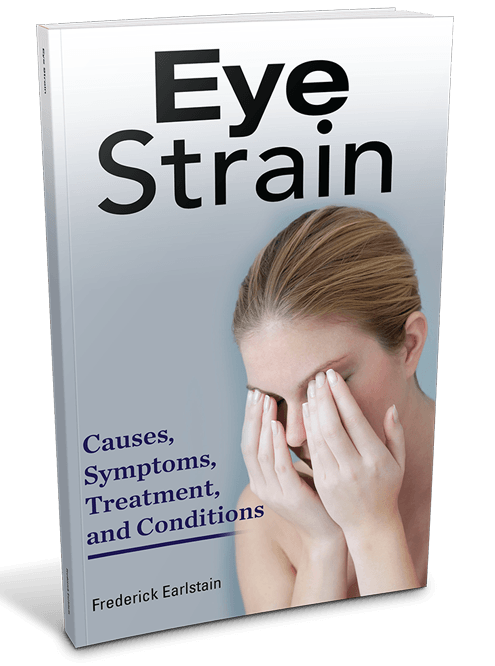CHAPTERS
Navigate to chapter
► Chapter 1: The Problem of Eye Strain
► Chapter 2: Eye Strain and Associated Problems
► Chapter 3: Working With Eye Care Professionals
► Chapter 4: Dealing With Eye Strain
► Chapter 5: Technology And Your Eyes
► Chapter 6: Frequently Asked Questions
Chapter 1: The Problem of Eye Strain
None of us are immune to the effects of eye strain, nor is it possible to completely avoid the phenomenon. Every graduate student knows the feeling of reading until the words blur on the page.

New parents know the way their eyes feel after a sleepless night of walking the floor with a crying baby. And anyone who has traveled can attest to the effects of several hours in an airplane cockpit full of stale, recirculated air. The human eyes are sensitive structures, ones on which we rely heavily, and ones we often abuse with impunity.
Eye strain or fatigue is a common complaint, one that is more annoying than serious, but that can compromise our ability to work effectively while increasing an overall sense of being tired and over worked. The scientific name for the condition is asthenopia.
Generally the problem can be improved and prevented altogether by common sense measures. If, however, eye fatigue is a persistent problem with headaches, discomfort, double vision, or any other changes in your sight, consult an eye doctor immediately.
Although we all rely heavily on our vision, most of us have no understanding of how our eyes work or how our brains interpret the visual signals they receive.
In order to understand the structure of the eye, let’s follow the path that light takes as it enters the eyeball. First light passes through the clear layer at the front of the structure called the cornea, a space filled with a watery liquid that helps the eyeball maintain its shape.
The fluid, called the aqueous humor, sits in place around the colored portion of the eye known as the iris. The opening at the center of the iris is called the pupil. The pupil expands and contracts according to the amount of available light.
Light passes through this opening, which appears as a black dot and next reaches a round, clear lens. A tiny muscle encircles the lens, bending it as necessary to allow for both near and far vision.
At the back of the eye there are three layers: the sclera, the choroid, and the retina. The sclera is the white part of the eye that protects the eyeball. The choroid is the middle layer. The inner layer or retina is comprised of nerve endings that translate light into signals comprehensible to the brain.
The gelatin-like substance that fills the back of the eyeball and defines its round shape is called the vitreous humor.
At the rear of all of these structures lies the optic nerve, which transmits signals from the retina to the brain where they are interpreted as visual input.
Each eye is moved by the coordination of six muscles so that you can continue to look at something even if you move your head. Four of these pull the eyeball into a straight line up, down, or to the side, while two rotate or turn the eye.
Like all the parts of the human body, the eyes are subject to fatigue from overuse. Since we rely so heavily on our vision in our day-to-day lives, eye strain can not only wear us out, it can affect our productivity and our enjoyment of many “time off” activities.
We rely on varying levels of eye care professionals to help us keep our eyes healthy and to provide treatments and corrective lenses to improve and stabilize our vision.
Eye Care Professionals
There are three types of eye care professionals each with a different level of accreditation and skill:
- Optician – Opticians assemble, fit, and sell prescription eyeglasses and, subject to specific state regulations, potentially contact lenses as well.
- Optometrists – An individual who holds a degree in optometry is a doctor and has been trained not only to evaluate the degree of a person’s vision and correct abnormalities with an eyeglass prescription, but also to diagnose general eye conditions.
- Ophthalmologist – An ophthalmologist holds either a degree as a Doctor of Osteopathy or as a Doctor of Medicine. These professionals provide comprehensive care, evaluating the health of the eyes, prescribing corrective lenses, diagnosing and treating common and complex eye problems, and performing eye surgeries.
What then, are the most common causes of eye strain or fatigue?
Causes of Eye Strain
Any activity that requires concentrated use of the eyes for a long period of time can cause eye fatigue. Common culprits include reading, writing, and driving, but you can also wear your eyes out squinting in bright sunlight and struggling to see in dim light.
Want to read the entire thing?

